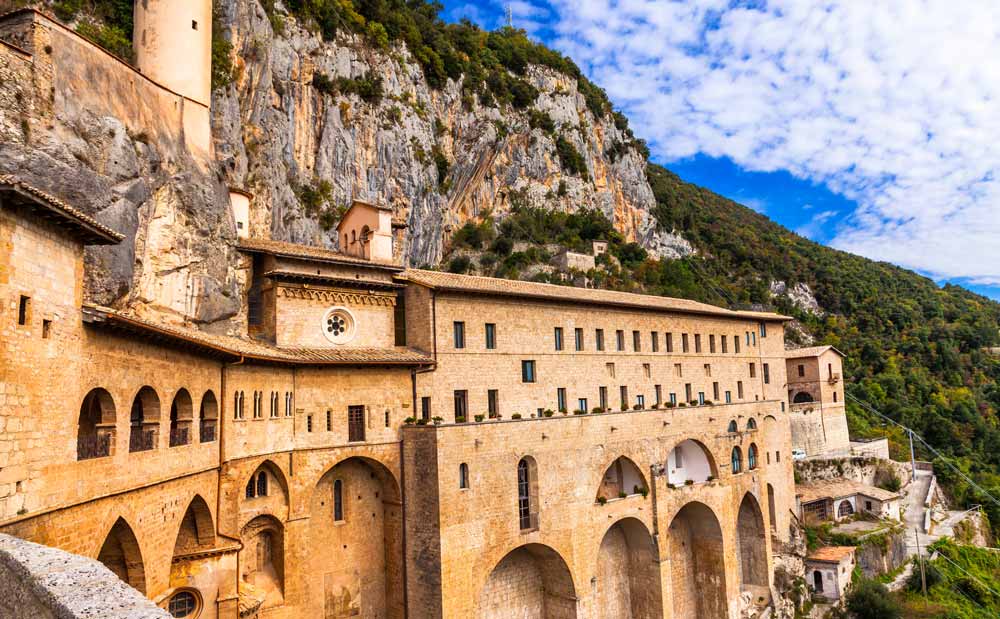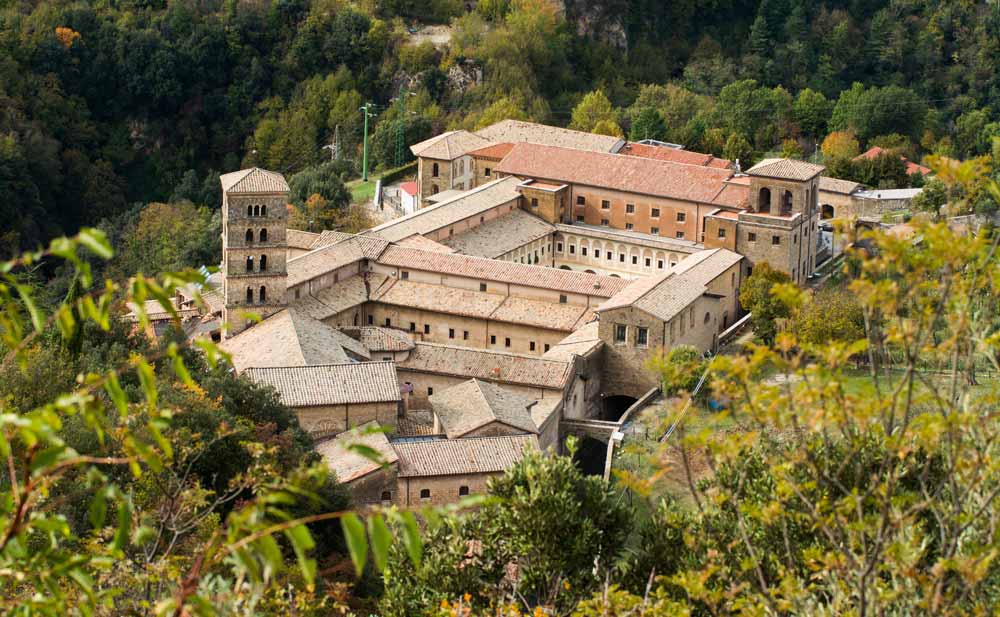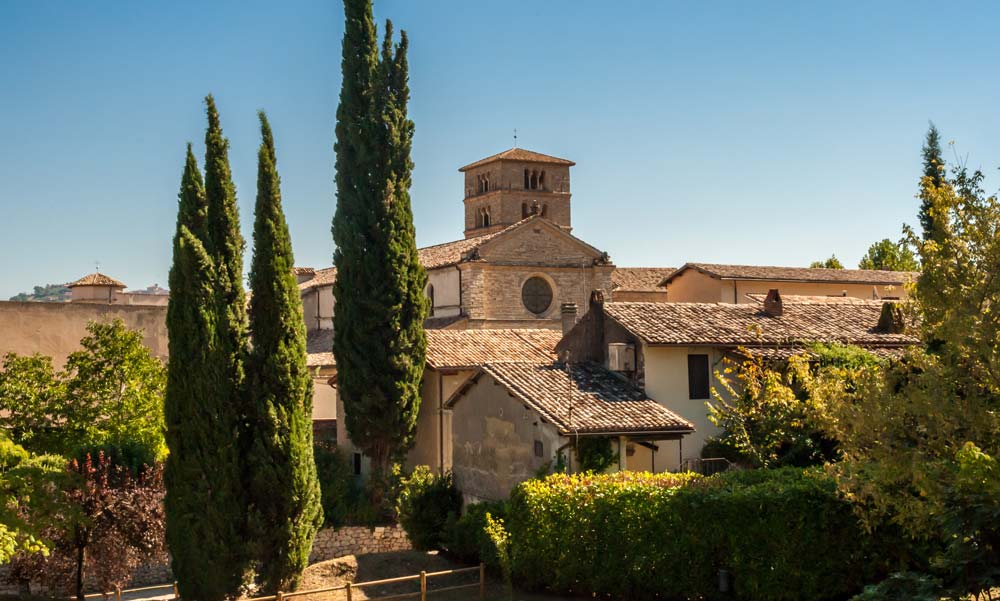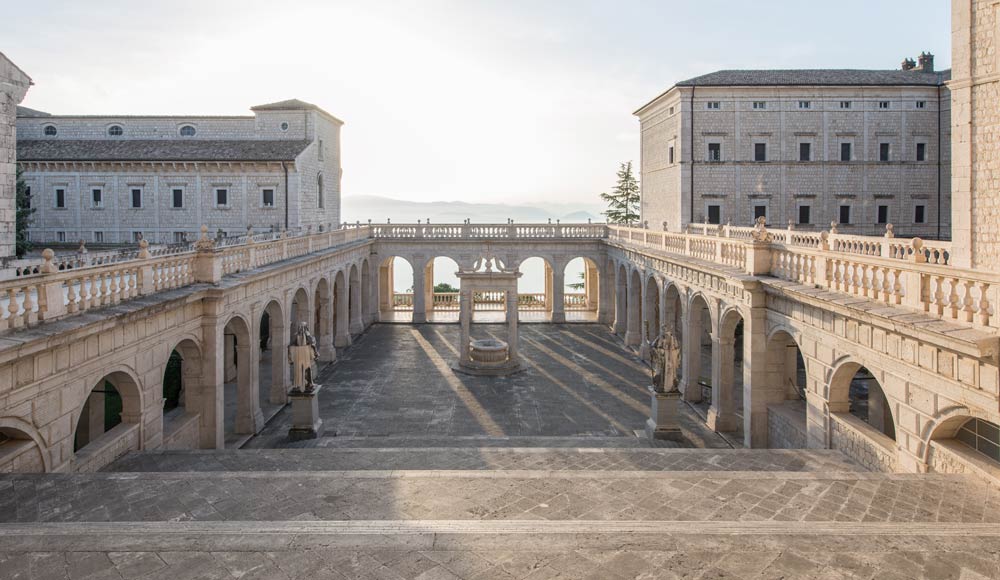Lazio is the cradle of art, culture and landscape, a combination that makes the Benedictine Monasteries, candidate as UNESCO World Heritage Sites, unique. The Abbey of Santa Maria di Farfa, the Monasteries of the Sacro Speco and Santa Scolastica in Subiaco, and the Abbey of Montecassino are witnesses of the Benedictine monasticism, which influenced the whole Medieval Europe.
The Benedictine Abbeys, harmoniously built in the respect of the surrounding environment, have always been, with their elegant architectures, important hubs of cultural education. Silent work and prayers are still today a model of civil cohabitation and environmental sustainability and preservation.

Sacro Speco
San Benedetto da Norcia abandoned worldly life and withdrew to pray in a cave on Monte Taleo, the Sacro Speco in Subiaco, by the Aniene River, among the woods of the Simbruini Mountains and the remains of Nero’s Imperial Villa. Perched on a cliff, with stairs and chapels carved into the rock, it is the most important example of monastic settlement. Here it is possible to visit the cave where San Benedetto had lived for three years, which still preserves the Saint’s handprint on a wall.

The Monastery of Santa Scolastica
In 1465, the Monastery of Santa Scolastica hosted the first Italian printing house, where the first movable type book in Italy was published. Today, it is possible to admire the volume in the “Biblioteca Nazionale del Monastero di Santa Scolastica”. The motto “Ora et Labora”, well representing the Regola Monachorum, is the basis of the monastic spirit even after over 1.500 years. A great importance was attributed to time, a gift of God to be spent in prayer, sacred texts, work and rest.

Abbey of Santa Maria di Farfa
A little further north stands the Benedictine Monastery of the Abazia di Farfa in Fara in Sabina, a place of spirituality and culture surrounded by peace and nature. The place has not changed, a medieval village where the monks offered hospitality to travellers and traders, now transformed into a burg full of handicraft workshops. A fifteenth-century portal leads to the courtyard of the three naves Church of Santa Maria di Farfa. Rebuilt in 1492, it hosts the Chiostrino Lombardo with its thirteenth century Romanesque mullioned window, the bell tower, and the seventeenth century cloister with Roman sculptures and epigraphs.
Here we can admire three works by Orazio Gentileschi, father of the famous painter Artemisia and master of Caravaggio. According to some art critics, the first work attributed to Artemisia Gentileschi was found in this church. The modern and the ancient libraries are among the richest in Europe. The latter preserves precious codes transcribed here (the famous Illuminated Choir Books from the fifteenth-sixteenth century) and a Scriptorium, where the Minuscola Romana font was invented, later become the Romanesca Farfense. Here we can also find a prestigious hand-weaving laboratory.

Montecassino Abbey
Let us reach the last of the three UNESCO World Heritage Benedictine Monasteries and recall the history of the Gustav Line, crossed by the soldiers during the Second World War up to the Abbey of Montecassino. The complex was built where the Acropolis and a temple dedicated to Apollo once stood and where San Benedetto built the first Cenobio di Cassino.
The Abbey of Montecassino was destroyed four times by the Lombards, the Saracens, a violent earthquake and the bombing of 1944 and was rebuilt with its previous appearance, within its white walls dominating the town of Cassino. Past the big door, we discover three large cloisters with the statues of San Benedetto and Santa Scolastica, the three naves Basilica decorated with golden stucco and polychrome marble, the wooden choir, and an organ with more than five thousand pipes.
The Museum hosts sketches of the frescoes that once adorned the walls and the vault of the Church, lost during the bombings, liturgical treasures, archaeological and medieval findings, and the large Nativity Tondo by Botticelli. The ancient works, all transcribed, are now kept in the Library, today a national monument.
